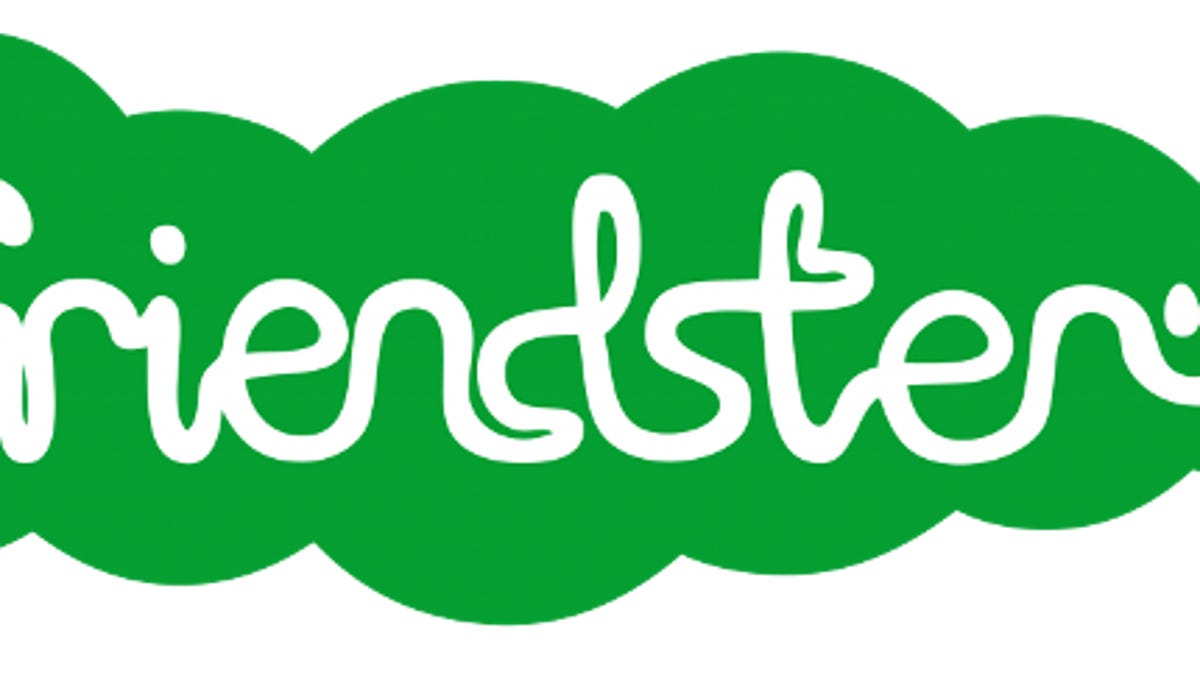Farewell, 2003: The Friendster apocalypse is nigh
The site that was many peoples' intro to online social networking is now telling them that it's planning to focus exclusively on gaming--and they better export profile content before it's deleted.

Social network pioneer Friendster, as we know it, will be gone on May 31. The company today announced to members that as part of its conversion from would-be Facebook competitor to "the social gaming destination of choice," it would be keeping accounts alive but deleting all user photos, comments, blog posts, and other profile content. Users interested in preserving that data are encouraged to use a tool to export their profiles to their hard drives.
It's another sad chapter for the company that could have become the social network that everyone used--basically, what Facebook is now. Or maybe it never could've been. For the past few years, after losing out first to MySpace and then Facebook in the U.S., Friendster has been focusing on the Southeast Asian markets where it's proven to have some lasting power. Late in 2009, it sold to MOL Global, a digital payments company based in Malaysia.
By getting rid of social-network profile content like photos and blog posts altogether, it's a final concession: Facebook won. It's also grounds for nostalgia for those people who were active Friendster users back in the day.
Yet I realized, upon reading today's news, that Friendster had completely passed me by. I never had a profile. I never knew anyone who used it. I wasn't sure who its users really were, why they'd joined it, or why they left. So I put out a query on Twitter: Ex-Friendster users, where are you?
From my brief and informal research, it looks like Friendster's glimmer of spotlight happened in the second half of 2003, about a year after the site had launched, with its users primarily among those who were in college or within a few years of graduation. "It was great fun for about two months," someone quipped to me on Twitter. "I log in every few months to relive my 20s and emo hair styles of the times," said another.
Friendster would miss its chance to be the first social network to "make it big" among mainstream users. But it was the first site that actually had a chance. The people who used Friendster were, for the most part, young adults looking to add a digital extension to their real-world social lives. They weren't necessarily the uber-geeks who populated early social sites like Tribe.net, nor were they the angsty teenagers typing out anonymized accounts of high school cafeteria drama. (Disclosure: I may or may not have been one of them circa 2000.) This was the first glimpse we had of the Internet as a place where everyone would be socializing online, where the physical and virtual were blurred.
But while Friendster became a sensation, it didn't get big enough. Its users hadn't lain down the roots that would keep them interested even when something newer and shiner came along. That's the hurdle that Facebook got over that MySpace didn't, and that Friendster before it didn't either--becoming such a routine part of so many peoples' lives that it no longer seems to require any effort. Of course you check your Facebook news feed. You're not about to forget about it.
Or maybe Friendster's mini-heyday in 2003 was still just too early. I knew plenty of people who created Facebook profiles as soon as the young social network was available at their colleges in 2004 because, given that it was restricted to people who shared their university affiliation, they were finally comfortable joining a social network. In the early 2000s, the idea of creating a profile on a social network was something unusual to most people--potentially dangerous, potentially creepy, and potentially an indicator that you didn't have enough going on in your real life and so were forced to turn to the Internet. Friendster was on the right track by encouraging members to only "friend" people they knew in real life. But just by offering a worldwide network of membership, it might have been too much too soon.
Some have blamed Friendster's demise on how frequently it suffered outage problems, an argument which just doesn't hold up when you see how Twitter has managed to keep growing despite frequent hosings. Maybe that had something to do with it, but it wasn't the entire reason why Friendster faltered. MySpace was trendier, and then Facebook was more exclusive and intimate. First-mover advantage didn't apply to Friendster when it had to keep up the pace with newer upstarts.
That's the way it happens on the Web. A new, hot space will get crowded. Somebody will win. Some others will lose. Usually, the losers just sort of fade away or fold into something different. That's why Friendster's concession of defeat is a bold one: telling its members, like parents telling twentysomethings to get rid of all that clutter back home that they've forgotten about, to pack up and head elsewhere.

